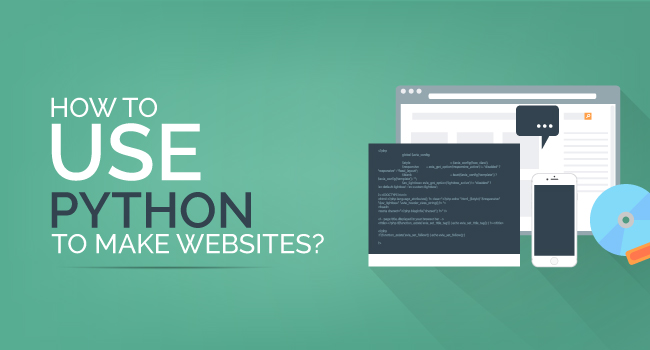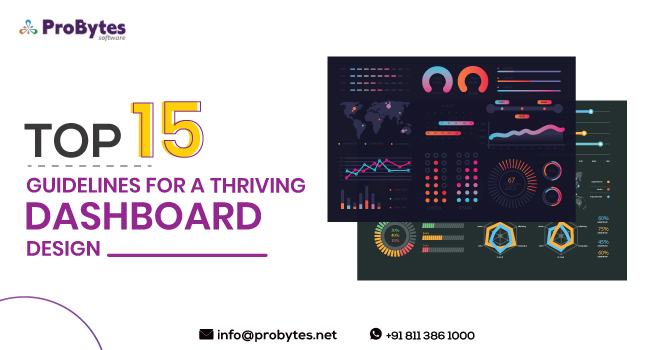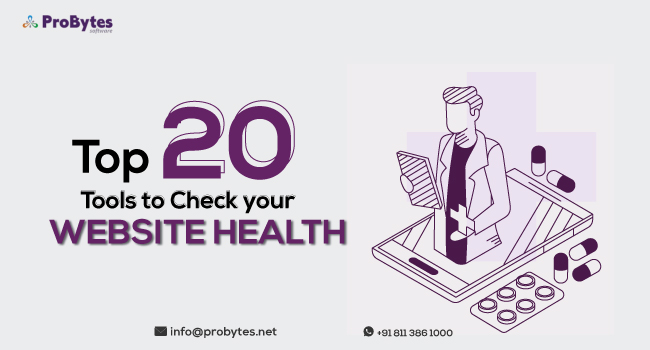Blog Category(283 Blogs)
Are you sure that your web application meets the cybersecurity standards? With increasing development in cyber technology, the incidences of data breach and cyber-attacks are also rising. To protect your web application from such threats, you should implement some Web Application Security Practices.
However, many web application owners are more focused on building the application and making it live before evaluating and checking all the possible security gaps.
The decision-makers look into the user interface, user experience, stability, and other factors that influence the marketability of the web application. All these practices increase the vulnerabilities in the web application
A recent survey by Juniper Research has found that the average expenses involved in managing data breach problems are expected to be more than $150 million in 2020.
This figure underlines the importance of focusing on security features and following the best security practices right from the time the website architecture is being constructed.
In this blog, we will find out more about web application security and the top 15 practices that you can follow to make your web application more secure.
What is Web Application Security?
Before we go into details about the best security practices, let’s understand more about web application security. The security features form the central component around which the other attributes of the website are built.
Read Also: 7 Web Development Strategies To Take Your Business To The Next Level
Web application security deals with following protective measures and reducing possible threats in the core and supported assets of an application including web services, APIs, website architecture, framework, and database.
The most vulnerable sections of a website are its content management system, server, database administration system, and associated applications.
The four major aspects of web application security are:
Availability: The web application needs to be available for the authorized user with the specified time after request.
Integrity: The web application should not be modified by any unauthorized user
Confidentiality: All the sensitive data in the web application should be exposed under any condition
Non-repudiation: It means that an authorized user should not be able to deny any changes made to the data
The most common forms of cyber threats are SQL injection, Cross-Site Request Forgery (CSRF), DDoS attack, broken authentication, Cross-site scripting (XSS), and Exploiting inclusion vulnerabilities.
Your website application should have security features that protect your application and prevent the above listed and other threats.
Top 15 Web Application Security Practices You Should Know and Follow
1. Evaluate your Application
An enterprise web app can have hundreds of mission-critical applications. In order to set up an effective web application security program, you need to have a detailed application infrastructure. While building the application infrastructure, list all the components and attributes.

Consider all components as vulnerable and analyze them from the perspective of security. While creating the layout of the network infrastructure, also consider the people who have network access controls. As a proactive practice, you can create a document of all the components and extensions of your application.
Update the document every time you make a version update, add a new extension or API, or change the existing components. It will help you when you do your regular vulnerability check.
2. Build A Web Application Threat Model
After creating a blueprint of the application infrastructure, build a threat model that will have all the details of possible threats for each component.

This document should include details of the components, the version, usage, as well as access details. While creating the vulnerability list, make sure to cover all the layers of your web application.
3. List And Sort The Applications
Now that you have all the pertinent data, you need to list them and sort them into different buckets such as critical, serious, and normal.

The critical bucket list should have all components that are customer-facing, contain sensitive information, and payment details. Most hackers try to break into components that give them access to personal details and bank details. So, it is essential to have a high level of security for the components in this list.
The serious vulnerabilities bucket list will include components that contain both company and customer information. They need to be tackled once the critical list is managed.
The normal bucket list will contain components that hackers may not have any knowledge of. However, it is a good practice to check these components for vulnerabilities during your regular check.
4. Do a Software Security Risks Assessment
Have a systematic assessment plan to evaluate all the risks or vulnerabilities in the system. It is a good practice to have a security check protocol in place. The security protocol should have detailed security policies that are shared with all the stakeholders, employees, and users, when needed.

Carefully profile all users who have access to the web application. For short-time users, create guest network access with guest authentication. You should have a foolproof plan to identify and isolate any particular system or login that faces a cyber attack.
5. Identify New Application Vulnerabilities

It is not just enough if you do a vulnerability check of the existing components. You should also have a plan to protect your application from possible sources of threats, in the future. To do this, you need to stay updated about the latest developments in cybersecurity.
6. Follow Secure Coding Standards
Developers are more focused on building the application as per the specified architecture. So, they may not pay attention to codes that could become a weak link in the app. The factors that developers need to consider while coding are:

- Location of session information
- Possibility of remote code execution
- Access management
- Authentication and password management
- Input validation
- Error handling and logging
- System configuration
- Security extensions that servers use
- Software language access to system
- File management
- Communication security
7. Limit Access & App Permissions
One of the most important web application security practices that you need to follow is limiting network access. You need to give minimum access required just to do the task.

While developing the app, you should ensure that the super administrator is able to define the permissions and access provided to the stakeholders, users, or clients. Also, regularly check the access list to ensure that no one is misusing their permissions.
While checking the permission and access list, also check for users who are no longer in the system and remove those accounts. These accounts could provide hackers with backdoor access to your website application.
8. Follow Proper Session Handling

Session is the time that a user interacts with the application. A unique ID is created for each session. This ID connects the user credentials with the traffic and access controls. A session ID needs to belong so that hackers cannot easily break it.
Read Also: 13 Frequently Asked Questions On Python Web Development
Also, the ID should not have any sensitive information. A normal session handling process has the following steps – Pre-Authentication session; Authentication; Session management; Access control; and Session finalization. Session handling allows you to track anonymous users and apply security access controls wherever necessary.
9. Encrypt the Data
To safeguard your website application, use encryption in as many layers of the application as possible. The basic encryption technologies that you can implement are HTTPS, HSTS, and SSL. Encryption is of two types – symmetric and asymmetric encryption.

In symmetric encryption, the same set of keys is used for both encryption and decryption while two different sets of keys are used for encryption and decryption in an asymmetric encryption. You should also regularly check if there is any vulnerability in the encryption and decryption process.
10. Use A Web Application Firewall

A firewall application adds a layer of security to your website application. All traffic to your application can be routed through this web application firewall, which filters out possible threats. A firewall can protect your web application from SQL injection attacks and Cross-site Scripting attacks.
11. Use Only Authorized APIs
APIs help enhance the stability and performance of your web application. However, as most APIs are third-party software solutions, they can make your application vulnerable.

Poorly coded APIs or those from unverifiable sources can harm your website. So, make sure to use only authorized APIs for your website application.
12. Ensure Secure Data Storage

The database is a vulnerable component of your website application. Preferably, data storage should be internal and private. You can use database libraries with an additional layer of encryption to store data.
13. Update Your Server Regularly
The server is another vulnerable component of your website application. While checking the server for vulnerabilities, you can take a top-to-bottom and end-to-end approach to ensure that you have covered all the components.

Also, regularly update the server to the latest cybersecurity standards. Server updates can be done to add new features or to check for bugs. Create a document of the updates installed and the fixes made, so you can refer to it every time you update the server.
14. Do An Intensive Testing
Stringent and intensive testing is one of the best website application security practices. It is essential to test the structure and function of each and every component of your web application.

Based on the application and function, you can go for manual or automated testing. The common types of software testing are static testing, dynamic testing, interactive testing, and mobile testing.
Another type of testing is the penetration testing. It is done by ethical hackers to evaluate the security of the application.
15. Automate Vulnerability Management
The growing cyberscape has brought with it a whole range of risks and cyber threats. It can be difficult to manually check all components for vulnerabilities and fix them.

The best solution is to automate repetitive tasks and implement security solutions. Analytics-based automation solutions not only help you identify and fix the threats, but also help you analyze the source of the threat.
Read Also: Web Development Vs Web Design – Want To Know The Difference?
Organizations that are looking to build secure website applications should think of implementing the best web application security practices right from the development stage.
If you are looking for a reliable technology partner to help you build a robust and secure web application that meets the highest security standards, contact Probytes.

 Python
Python Magento
Magento Odoo
Odoo How To
How To How Much
How Much Yii Development
Yii Development Core PHP
Core PHP Prestashop
Prestashop Latest News
Latest News Education
Education Web Design
Web Design Business
Business Ecommerce
Ecommerce Travel
Travel Banking and Finance
Banking and Finance Web Development
Web Development Ruby On Rails
Ruby On Rails Joomla Development
Joomla Development Ecommerce
Ecommerce Magento Development Services
Magento Development Services Hire a Developer
Hire a Developer Web Crawling Services
Web Crawling Services











